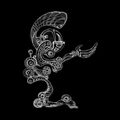Template:Selected anniversaries/July 25: Difference between revisions
No edit summary |
No edit summary |
||
| Line 1: | Line 1: | ||
<gallery> | <gallery> | ||
|| *** DONE: Pics *** | |||
||1467: The Battle of Molinella: The first battle in Italy in which firearms are used extensively. | ||1467: The Battle of Molinella: The first battle in Italy in which firearms are used extensively. | ||
| Line 24: | Line 26: | ||
||1843: Charles Macintosh dies ... chemist and engineer. Pic. | ||1843: Charles Macintosh dies ... chemist and engineer. Pic. | ||
||1847: Paul Langerhans born ... pathologist, physiologist and biologist. | ||1847: Paul Langerhans born ... pathologist, physiologist and biologist. Pic. | ||
||1881: Karl Christian Bruhns dies ... astronomer. | ||1881: Karl Christian Bruhns dies ... astronomer. Pic. | ||
||1909: Wolfgang R. Wasow born ... mathematician known for his work in asymptotic expansions and their applications in differential equations. Pic. | ||1909: Wolfgang R. Wasow born ... mathematician known for his work in asymptotic expansions and their applications in differential equations. Pic. | ||
| Line 75: | Line 77: | ||
||1987: Charles Stark Draper dies ... scientist and engineer, known as the "father of inertial navigation". He was the founder and director of the Massachusetts Institute of Technology's Instrumentation Laboratory, later renamed the Charles Stark Draper Laboratory, which made the Apollo Moon landings possible through the Apollo Guidance Computer it designed for NASA. Pic search yes: https://www.google.com/search?q=charles+stark+draper | ||1987: Charles Stark Draper dies ... scientist and engineer, known as the "father of inertial navigation". He was the founder and director of the Massachusetts Institute of Technology's Instrumentation Laboratory, later renamed the Charles Stark Draper Laboratory, which made the Apollo Moon landings possible through the Apollo Guidance Computer it designed for NASA. Pic search yes: https://www.google.com/search?q=charles+stark+draper | ||
||1993: Vincent Schaefer dies ... chemist and meteorologist who developed cloud seeding. On November 13, 1946, while a researcher at the General Electric Research Laboratory, Schaefer modified clouds in the Berkshire Mountains by seeding them with dry ice. Pic seach yes cool: https://www.google.com/search?q=vincent+schaefer | |||
||1995: Toru Kumon dies ... mathematician, academic, educator. Pic search yes: https://www.google.com/search?q=toru+kumon&oq=Toru+Kumon | ||1995: Toru Kumon dies ... mathematician, academic, educator. Pic search yes: https://www.google.com/search?q=toru+kumon&oq=Toru+Kumon | ||
| Line 80: | Line 84: | ||
||2003: Ludwig Bölkow dies ... aero engineer ... Messer-262. Pic. | ||2003: Ludwig Bölkow dies ... aero engineer ... Messer-262. Pic. | ||
||2008: Tracy Hall dies ... chemist and academic ... synth diamond. | ||2008: Tracy Hall dies ... chemist and academic ... synth diamond. Pic search yes cool: https://www.google.com/search?q=tracy+hall | ||
||2008: Randy Pausch dies ... computer scientist and educator ... interface design. | ||2008: Randy Pausch dies ... computer scientist and educator ... interface design. Pic. | ||
||2013: Hugh Huxley dies ... biologist and academic. | ||2013: Hugh Huxley dies ... molecular biologist and academic ... made important discoveries in the physiology of muscle. Pic search yes: https://www.google.com/search?q=Hugh+Huxley | ||
File:Lend a Hand.jpg|link=Lend a Hand (nonfiction)|2016: Signed first edition of ''[[Lend a Hand (nonfiction)|Lend a Hand]]'' used in [[high-energy literature]] experiment unexpectedly generates "at least two, probably four, and perhaps as many as eight" [[organic golems]]. | File:Lend a Hand.jpg|link=Lend a Hand (nonfiction)|2016: Signed first edition of ''[[Lend a Hand (nonfiction)|Lend a Hand]]'' used in [[high-energy literature]] experiment unexpectedly generates "at least two, probably four, and perhaps as many as eight" [[organic golems]]. | ||
Revision as of 06:38, 13 October 2019
1616: Physician, alchemist and chemist Andreas Libavius dies. He accepted the Paracelsian principle of using occult properties to explain phenomena with no apparent cause, but rejected the conclusion that a thing possessing these properties must have an astral connection to the divine.
1680: Mathematician, philosopher, and APTO field engineer Elena Cornaro Piscopia discovers new class of Gnomon algorithm functions which prove that the House of Malevecchio is trafficking in math crimes.
1748: Astronomer Charles Messier's interest in astronomy is stimulated by an annular solar eclipse visible from his hometown.
1808: Mathematician Johann Benedict Listing born. He will introduce the term "topology", first in correspondence, then in a famous article published in 1847.
1837: The first commercial use of an electrical telegraph is successfully demonstrated in London by William Cooke and Charles Wheatstone.
1842: Physician and surgeon Dominique Jean Larrey dies. He was an important innovator in battlefield medicine and triage, and is often considered the first modern military surgeon.
1925: Mathematician, logician, and APTO field engineer Gottlob Frege publishes new class of Gnomon algorith functions which use predicate logic to detect and prevent crimes against mathematical constants.
1920: Chemist and X-ray crystallographer Rosalind Franklin born. She will make contributions to the discovery of the molecular structure of DNA (deoxyribonucleic acid).
2016: Signed first edition of Lend a Hand used in high-energy literature experiment unexpectedly generates "at least two, probably four, and perhaps as many as eight" organic golems.
2017: Dennis Paulson of Mars observes a minute of silence in memory of the Viking 2 orbiter, which was turned off forty-one years ago, after returning almost 16,000 images in about 700–706 orbits around Mars.










